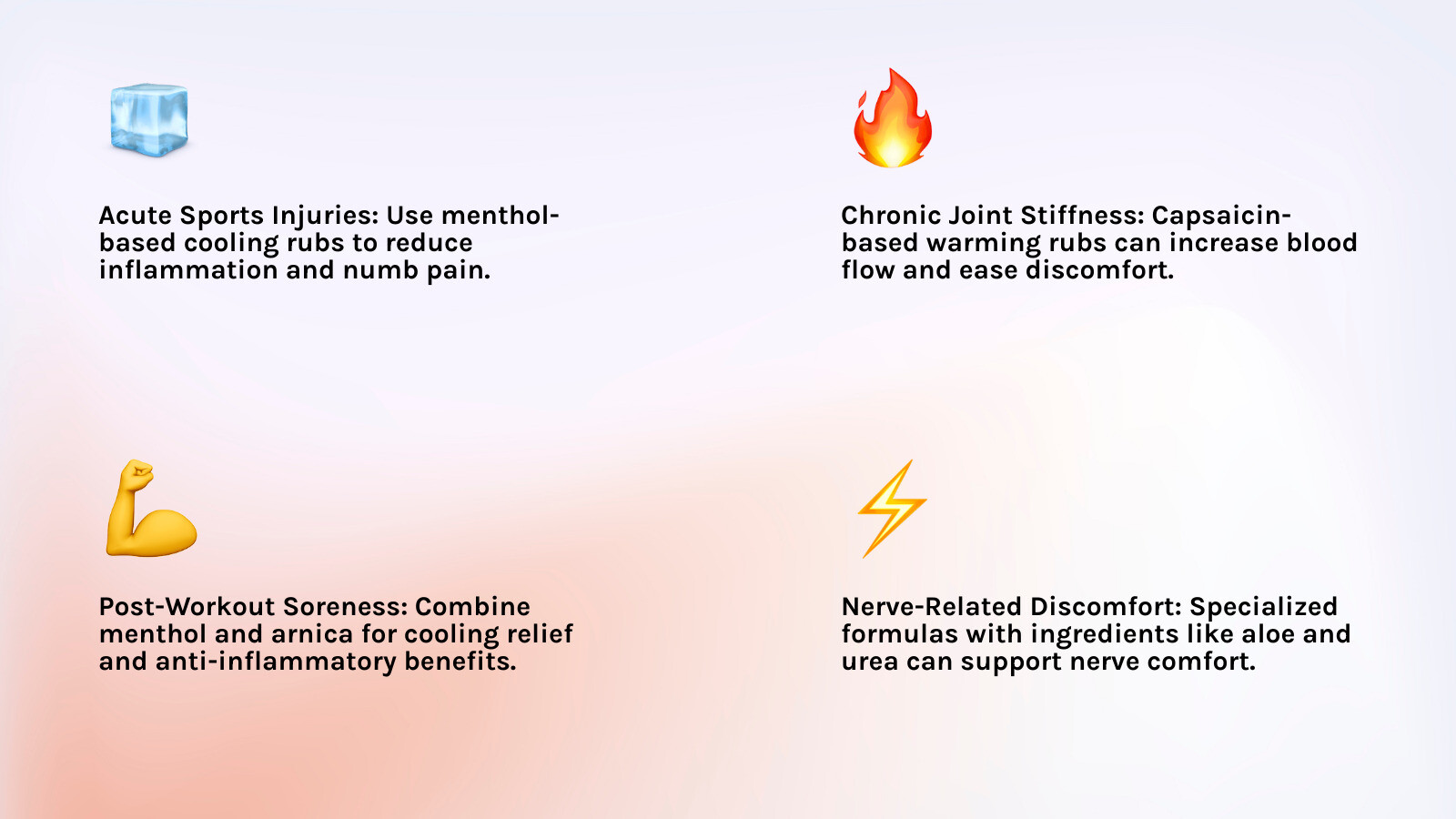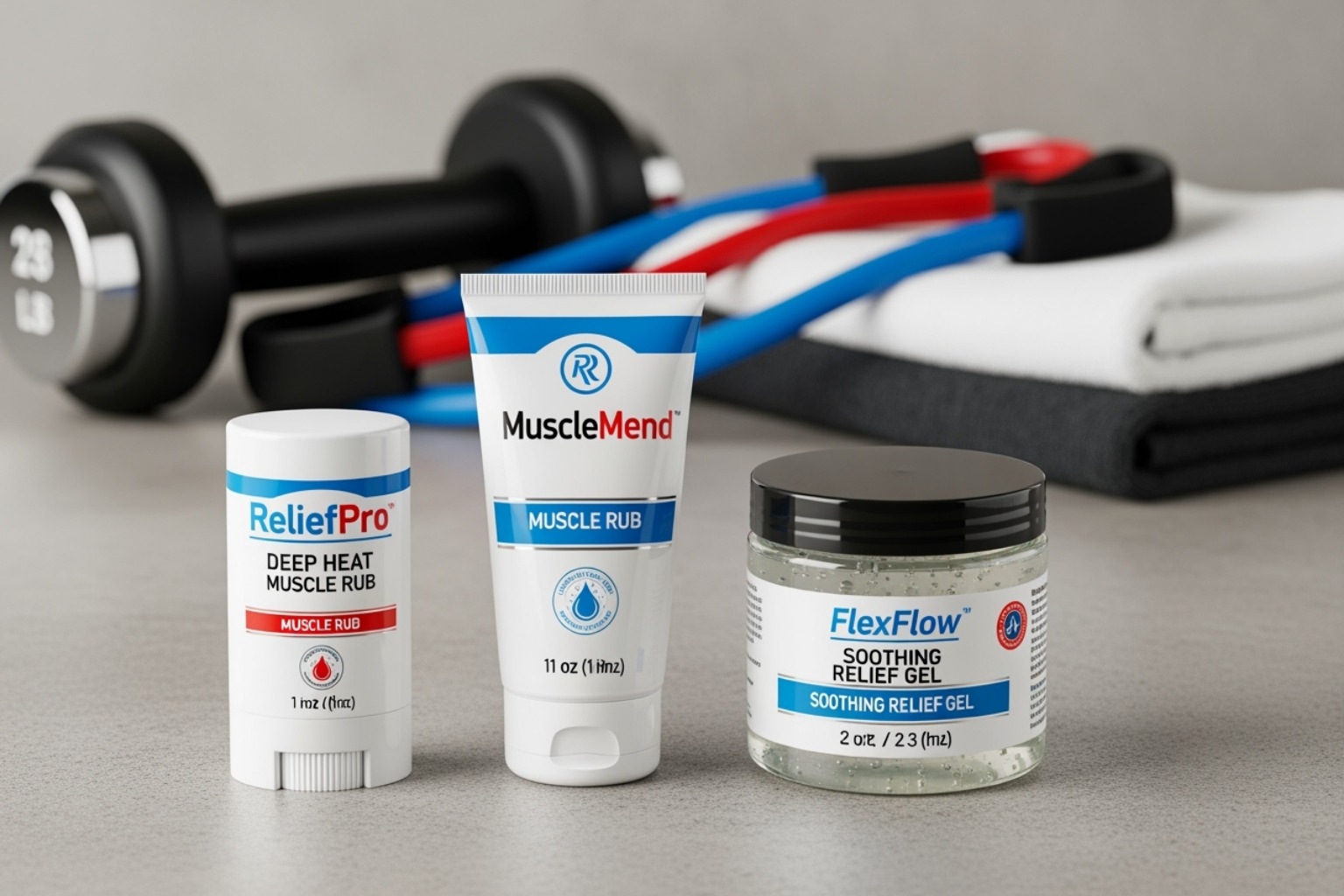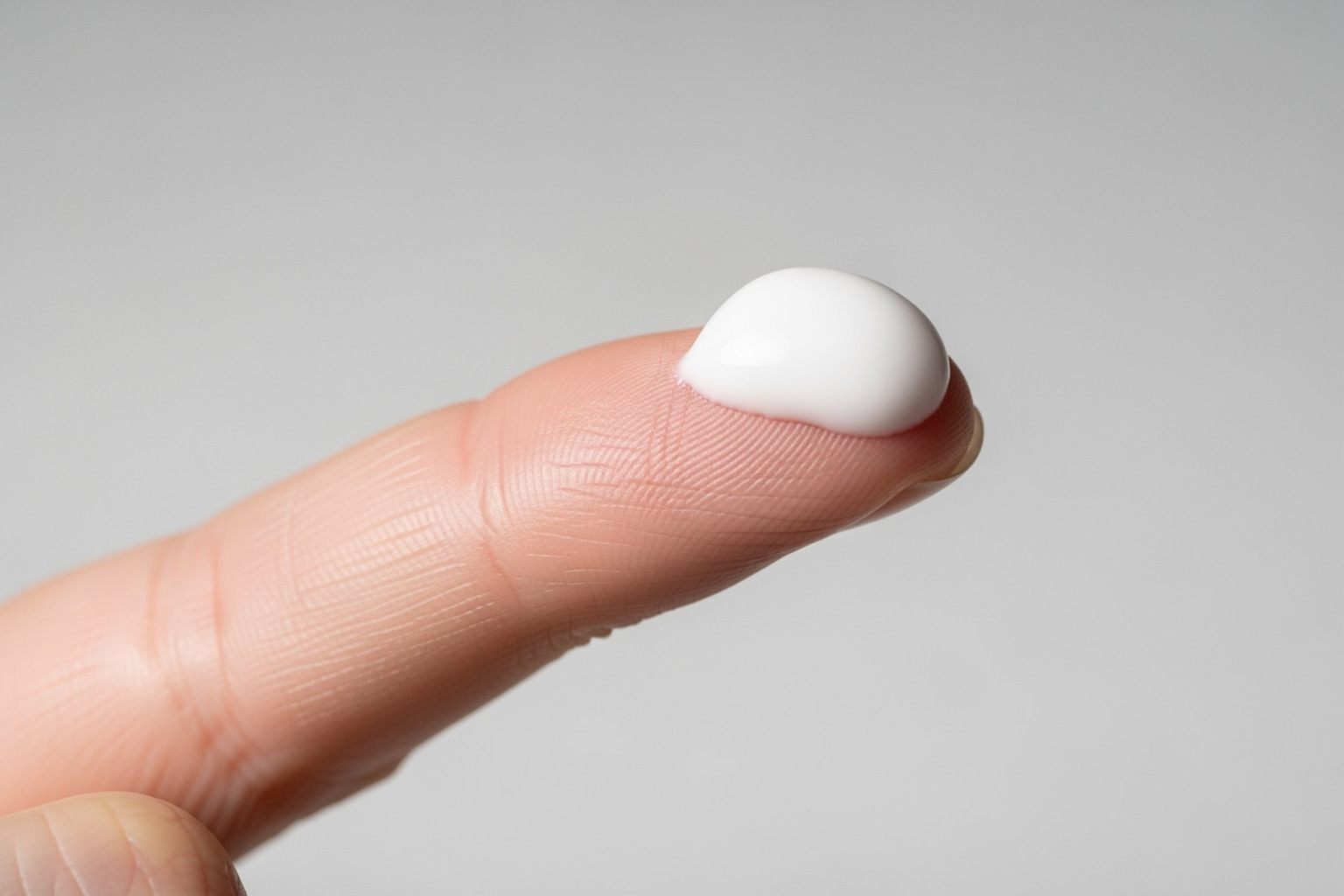Why Muscle Rub Cream Matters for Your Active Life
Muscle rub cream is a topical product that eases muscle and joint discomfort using active ingredients like menthol, camphor, and methyl salicylate. They create cooling or warming sensations that interfere with pain signals, offering temporary, targeted relief as an alternative to oral medications.
Quick Comparison: Types of Muscle Rub Creams
| Type | Best For | Key Ingredients | When to Use |
|---|---|---|---|
| Cooling Rubs | Acute injuries, inflammation, post-workout | Menthol, Camphor | After exercise or injury |
| Heating Rubs | Chronic stiffness, arthritis, pre-workout | Capsaicin, Methyl Salicylate | Before activity or for ongoing pain |
| Natural/Plant-Based | Sensitive skin, everyday use | Arnica, Aloe Vera, CBD | Daily management |
| Clinical Strength | Severe pain, targeted relief | Lidocaine, High-dose counterirritants | Specific problem areas |
If you've ever dealt with a tough training session or persistent back pain, you know how muscle discomfort can slow you down. The global market for these products is growing, valued at $1.9 billion in 2022 [1], as consumers increasingly seek targeted relief over oral pills.
While they don't heal tissue, muscle rub creams provide significant short-term relief by interfering with pain signals, allowing you to move more comfortably while your body recovers. Some use cooling agents like menthol for post-workout inflammation, while others use warming ingredients like capsaicin to ease chronic stiffness.
The challenge? With hundreds of products available, finding the right one can be overwhelming. Different ingredients target different types of pain, and what works for post-marathon soreness might not help chronic arthritis.
I'm Tony Enrico from Neuropasil. I've spent years studying topical pain relief, and my goal is to help you match the right ingredients to your specific pain, ensuring you choose the best muscle rub cream for your needs.

How Muscle Rub Creams Provide Targeted Pain Relief
When you experience muscle or joint pain, a muscle rub cream can provide fast, targeted relief. The science behind how they work is straightforward and effective.
These creams contain "counterirritants," ingredients that create a sensation on your skin (like cooling or warming) to distract your nervous system from deeper pain. This is based on the gate control theory of pain: the new sensation essentially "closes the gate" on the original pain signals trying to reach your brain.
Many ingredients also affect blood flow. Some cause vasodilation (widening blood vessels) to bring warmth and relax muscles, while others cause vasoconstriction (narrowing blood vessels) for an initial cooling effect. These creams provide symptomatic relief, not a cure. They make you more comfortable while your body does the actual healing work, which is often exactly what's needed to get through the day. Scientific research on counterirritants confirms how these ingredients interact with neural pathways [2].
The Difference Between Heat and Cooling Rubs
Choosing between a heating or cooling rub depends on your type of pain.
Heating rubs use ingredients like capsaicin (from chili peppers) or methyl salicylate (wintergreen oil) to create warmth, increase blood flow, and relax muscles. They are best for:
- Chronic stiffness and tightness
- Arthritis-related discomfort
- Pre-workout warm-ups to improve performance and prevent injury
Cooling rubs use menthol and camphor to activate cold receptors in the skin. The cooling, numbing sensation helps reduce inflammation and dulls pain signals. They are ideal for:
- Post-workout recovery to soothe hot, throbbing muscles
- Acute injuries like fresh sprains or strains
What Types of Pain Can They Treat?
Muscle rub creams are versatile and can provide relief for a wide range of common aches and pains, including:
- Muscle soreness, minor strains, and sprains from exercise or daily activities.
- Joint discomfort and stiffness in the knees, elbows, and shoulders, including arthritis-related pain.
- Common back pain, neck pain, and aching feet from poor posture or overuse.
- Sports injuries and symptoms of chronic conditions like fibromyalgia.
For severe, persistent pain or a significant injury, always consult a healthcare professional. For most everyday complaints, however, a well-chosen muscle rub cream can be a highly effective tool.
Decoding the Label: Key Ingredients and Their Benefits
Understanding the key ingredients in a muscle rub cream is the first step to choosing the right product. Today's market offers everything from traditional creams and ointments to gels, sprays, and roll-on sticks. But what truly matters is what's inside.

Counterirritants and Anesthetics
These are the primary active ingredients that create sensations and block pain signals.
- Menthol: Derived from peppermint, menthol provides a cooling sensation by triggering cold receptors in the skin. It's excellent for acute pain, inflammation, and post-workout soreness.
- Camphor: This ingredient offers a mild anesthetic effect with both cooling and warming sensations. It's a versatile choice for general muscle aches and is often paired with menthol.
- Methyl Salicylate: Also known as wintergreen oil, this ingredient provides a warming sensation and has aspirin-like anti-inflammatory properties, making it useful for deep aches and arthritis.
- Lidocaine: A local anesthetic that directly blocks pain signals by numbing the area. It provides targeted relief without a heating or cooling sensation.
Natural and Plant-Based Analgesics
Consumer demand for natural solutions has made plant-based ingredients more common.
- Capsaicin: From chili peppers, capsaicin works by depleting Substance P, a neurotransmitter that sends pain signals. With consistent use, it's effective for chronic pain, nerve pain, and arthritis.
- Arnica Montana: A traditional herbal remedy, this flower has anti-inflammatory properties ideal for bruising, sprains, and muscle soreness.
- Aloe Vera: Known for its soothing and moisturizing properties, aloe vera helps reduce skin irritation and complements other active ingredients, making it great for sensitive skin.
- Urea: A humectant that improves the absorption of other active ingredients, making them more effective. At Neuropasil, we combine aloe, urea, and menthol to create a natural, fast-acting cream that delivers targeted, soothing relief. Learn more about our pain relief creams and how these ingredients work together.
Finding your perfect muscle rub cream means matching these ingredients to your specific pain. Acute injury? Look for menthol. Chronic stiffness? Consider methyl salicylate or capsaicin.
The 2024 Roundup: Finding the Best Muscle Rub Cream for You
With so many options, choosing the right muscle rub cream can be confusing. This guide will help you find the best product based on your specific needs, whether you're looking for a cooling gel, a heating cream, or a natural formula.

Best Muscle Rub Cream for Everyday Aches and Pains
For general soreness, back and neck pain, and joint discomfort, a versatile and gentle formula is best. You need something reliable for regular use.
Neuropasil is designed for everyday comfort. Our natural blend of Aloe, Urea, and Menthol provides soothing relief without greasy residue or irritation. Customers use it for everything from general muscle soreness and joint discomfort to persistent back and neck pain, making it a reliable go-to for daily use. It's effective enough for real pain but gentle enough for whenever you need it. You can learn more about our approach to natural pain relief at our pain relief creams guide.
Best for Active Lifestyles & Sports Recovery
Athletes need fast-acting relief for pre-workout prep and post-workout recovery.
- Post-Workout Recovery: Cooling rubs with high menthol concentrations, like Biofreeze spray, offer fast, mess-free relief for sore muscles.
- Pre-Workout Warm-up: Heating rubs with capsaicin or methyl salicylate increase blood flow and reduce stiffness, preparing muscles for activity.
- Strains and Sprains: Dual-action (ice-to-heat) creams or convenient stick applicators like MEDISTIK are excellent choices for on-the-go relief.
Neuropasil is also a favorite among athletes. Our fast-acting, natural formula aids muscle recovery from soreness, strains, and sprains without harsh chemicals, supporting the body's natural recovery process.
Best Muscle Rub Cream for Ongoing Discomfort and Sensitive Users
For chronic pain from conditions like arthritis or fibromyalgia, you need formulas designed for consistent use. Sensitivity is also a key concern.
- Stronger Formulas: Products with diclofenac, an NSAID like in Voltaren, penetrate the skin to reduce inflammation but require careful use according to label directions.
- Gentler Options: Plant-based formulas with arnica, like those from KaLaya, offer relief without the harshness of strong counterirritants, making them suitable for sensitive skin. The CDC offers helpful information on managing ongoing pain [3].
Neuropasil's gentle, plant-based formula is ideal for those with sensitive skin or who need long-term relief without harsh chemicals. Many customers rely on it daily for chronic conditions like neuropathy, sciatica, fibromyalgia, and plantar fasciitis, finding it both effective and kind to their skin.
Safe and Effective Application: A How-To Guide
Proper application is key to getting the most from your muscle rub cream while avoiding side effects. Following a few simple steps ensures the active ingredients work effectively and safely.

How to Apply for Best Results
- Start with clean, dry skin to improve absorption.
- Perform a patch test. Before first use, apply a small amount to your inner forearm and wait 24 hours to check for irritation.
- Use a small amount. A pea-sized to dime-sized amount is usually enough. Gently massage it into the affected area until absorbed.
- Wash your hands thoroughly with soap and water after application to avoid contact with your eyes, nose, or other sensitive areas.
- Avoid applying heat (like a heating pad) or tight bandages over the treated area, as this can increase irritation or cause burns.
- Follow product directions for application frequency, which is typically 3-4 times per day.
Potential Side Effects and Precautions
While generally safe, be aware of potential side effects.
- Skin Irritation: Mild redness, warmth, or stinging is common. Discontinue use if irritation is severe or you experience blistering or swelling.
- Allergic Reactions: Though rare, stop use immediately if you develop hives, swelling, or difficulty breathing.
- Avoid Sensitive Areas: Never apply muscle rub cream to broken or irritated skin, or near your eyes, mouth, or genitals. If accidental contact occurs, flush with lukewarm water for 15 minutes.
- Accidental Ingestion: This is a medical emergency, especially for children. Ingredients can be toxic if swallowed. Call Poison Control immediately [4] and always store products securely out of reach of children and pets.
- Medication Interactions: Consult a doctor before use if you take blood thinners or have underlying health conditions, particularly with products containing salicylates.
Use by Children, Pregnant, or Nursing Individuals
Extra caution is needed for certain groups.
- Children: Always consult a doctor before using any muscle rub cream on a child. Products with methyl salicylate are generally not recommended for children under 12 and carry a risk of Reye's syndrome in teens [5].
- Pregnancy/Nursing: If you are pregnant or breastfeeding, ask a health professional before use. Ingredients like methyl salicylate are often not recommended.
Frequently Asked Questions about Muscle Rubs
Let's clear up some of the most common questions about muscle rub creams with straightforward answers.
Can I use a muscle rub every day?
Most muscle rub creams are safe for daily use for short periods (1-2 weeks) to manage acute soreness. However, if your pain persists, you may be masking an underlying issue. Long-term, consistent pain requires a proper diagnosis from a doctor to address the root cause, rather than just managing symptoms.
Do muscle rubs actually heal muscles?
No, muscle rub creams do not heal muscle tissue. They provide symptomatic relief by masking pain signals. This comfort allows you to rest and move more easily, which supports your body's natural healing process. Think of them as an aid to recovery, not the cure itself.
What's the difference between a muscle rub and a nerve pain cream?
This is an important distinction, as the creams target different types of pain.
Muscle rubs primarily target nociceptive pain, which comes from tissue damage like muscle soreness, strains, and sprains. Ingredients like menthol and camphor distract from this type of pain.
Nerve pain creams address neuropathic pain, which arises from nerve damage and often feels like burning, tingling, or shooting sensations. These creams often use ingredients designed to calm irritated nerves.
Many people experience both pain types at once. That's why we developed Neuropasil as a dual-action formula. Our blend of Aloe, Urea, and Menthol provides comprehensive relief for both nerve-related conditions (like neuropathy and sciatica) and muscle-related pain, making it a uniquely versatile solution.
Conclusion
You now know how to choose the right muscle rub cream by matching its ingredients to your specific pain. Cooling rubs with menthol are great for post-workout recovery, while heating rubs with capsaicin can soothe chronic stiffness. The goal is to empower you to find targeted relief for everything from everyday soreness to chronic conditions.
These creams provide symptomatic relief to aid your body's healing process; they are not a cure. Safety is also paramount. Always follow application directions, perform a patch test, and keep products away from children. For persistent or severe pain, consult a healthcare professional.
At Neuropasil, our mission is to provide effective, natural relief for both muscle and nerve pain. Our unique blend of Aloe, Urea, and Menthol offers targeted comfort for a wide range of conditions, from sports injuries to neuropathy. We've heard from countless customers who have found relief when other products fell short.
Don't let pain hold you back. Armed with this knowledge, you can choose the right product for your needs. We invite you to explore how Neuropasil's natural solutions can restore your comfort and mobility. Find the right pain relief solution for you and start feeling better today.
References
This guide was compiled using information from trusted scientific, medical, and consumer sources to ensure accuracy and transparency. All factual claims have been sourced below.
- Data Bridge Market Research. (2022). Global Muscle Rub Market – Industry Trends and Forecast to 2029. https://www.databridgemarketresearch.com/reports/global-muscle-rub-market
- Green, B. G., & McAuliffe, B. L. (2010). "Menthol desensitization of capsaicin irritation. Evidence of a short-term anti-nociceptive effect." Physiology & behavior, 101(3), 340–346. Sourced via National Center for Biotechnology Information (NCBI): https://www.ncbi.nlm.nih.gov/pmc/articles/PMC3101595/
- Centers for Disease Control and Prevention (CDC). "Arthritis: Management & Treatment." https://www.cdc.gov/arthritis/basics/management.htm
- Poison Control. American Association of Poison Control Centers. https://www.poison.org/
- Mayo Clinic. "Reye's syndrome." https://www.mayoclinic.org/diseases-conditions/reyes-syndrome/symptoms-causes/syc-20377255
Additional resources from Neuropasil:
- Neuropasil Blog: https://neuropasil.com/blogs/news
- Neuropasil Ingredients: https://neuropasil.com/pages/ingredients
- Neuropasil Nerve Pain Relief Cream: https://neuropasil.com/products/neuropasil-nerve-pain-relief-cream-4-oz














